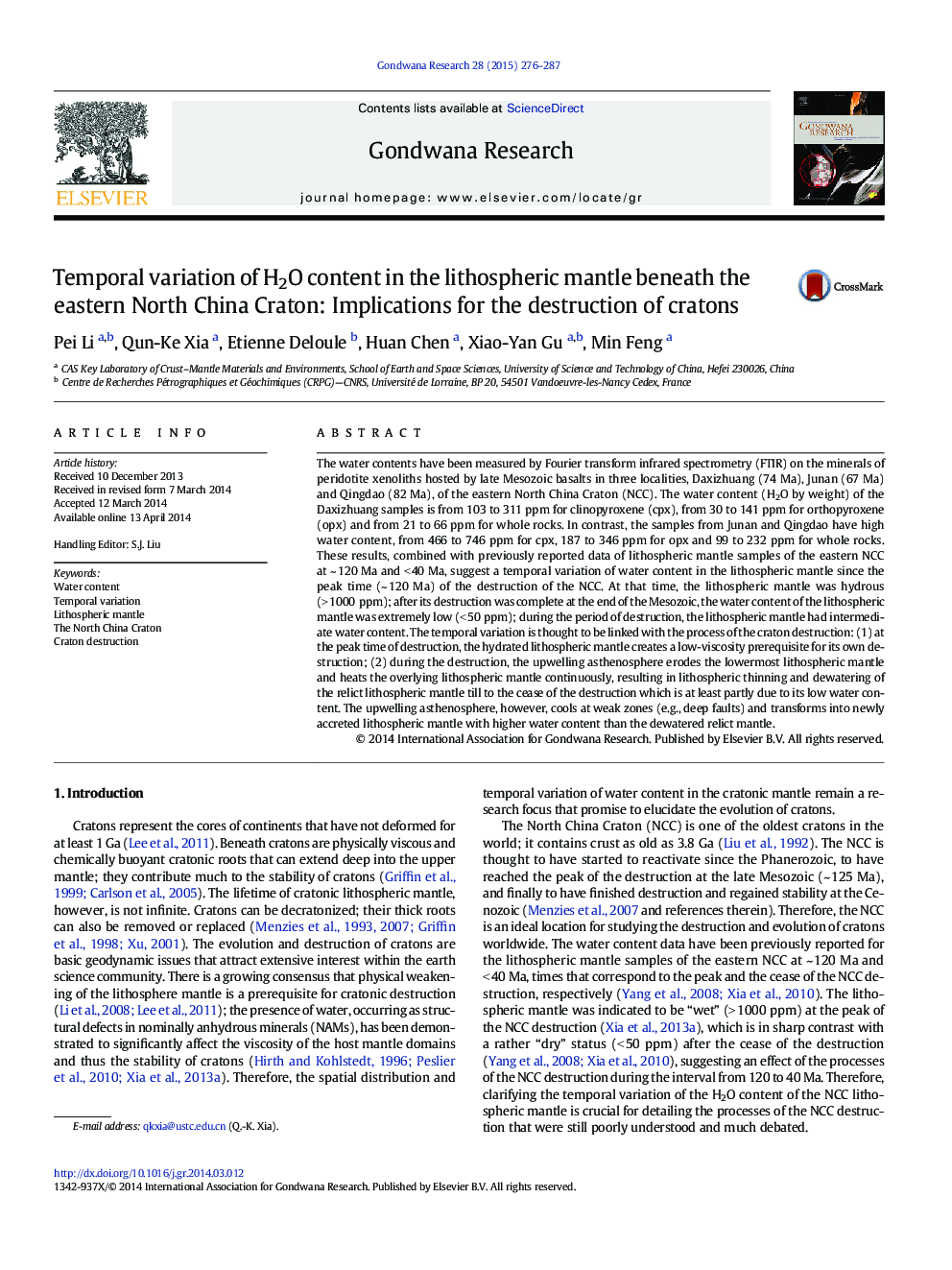| کد مقاله | کد نشریه | سال انتشار | مقاله انگلیسی | نسخه تمام متن |
|---|---|---|---|---|
| 4726809 | 1356347 | 2015 | 12 صفحه PDF | دانلود رایگان |

• The NCC lithospheric mantle was heterogeneous in H2O content at the late Mesozoic.
• A temporal variation of H2O content was revealed for the NCC lithospheric mantle.
• The cratonic mantle was both modified and newly replaced during destruction.
The water contents have been measured by Fourier transform infrared spectrometry (FTIR) on the minerals of peridotite xenoliths hosted by late Mesozoic basalts in three localities, Daxizhuang (74 Ma), Junan (67 Ma) and Qingdao (82 Ma), of the eastern North China Craton (NCC). The water content (H2O by weight) of the Daxizhuang samples is from 103 to 311 ppm for clinopyroxene (cpx), from 30 to 141 ppm for orthopyroxene (opx) and from 21 to 66 ppm for whole rocks. In contrast, the samples from Junan and Qingdao have high water content, from 466 to 746 ppm for cpx, 187 to 346 ppm for opx and 99 to 232 ppm for whole rocks. These results, combined with previously reported data of lithospheric mantle samples of the eastern NCC at ~ 120 Ma and < 40 Ma, suggest a temporal variation of water content in the lithospheric mantle since the peak time (~ 120 Ma) of the destruction of the NCC. At that time, the lithospheric mantle was hydrous (> 1000 ppm); after its destruction was complete at the end of the Mesozoic, the water content of the lithospheric mantle was extremely low (< 50 ppm); during the period of destruction, the lithospheric mantle had intermediate water content. The temporal variation is thought to be linked with the process of the craton destruction: (1) at the peak time of destruction, the hydrated lithospheric mantle creates a low-viscosity prerequisite for its own destruction; (2) during the destruction, the upwelling asthenosphere erodes the lowermost lithospheric mantle and heats the overlying lithospheric mantle continuously, resulting in lithospheric thinning and dewatering of the relict lithospheric mantle till to the cease of the destruction which is at least partly due to its low water content. The upwelling asthenosphere, however, cools at weak zones (e.g., deep faults) and transforms into newly accreted lithospheric mantle with higher water content than the dewatered relict mantle.
Figure optionsDownload as PowerPoint slide
Journal: Gondwana Research - Volume 28, Issue 1, August 2015, Pages 276–287